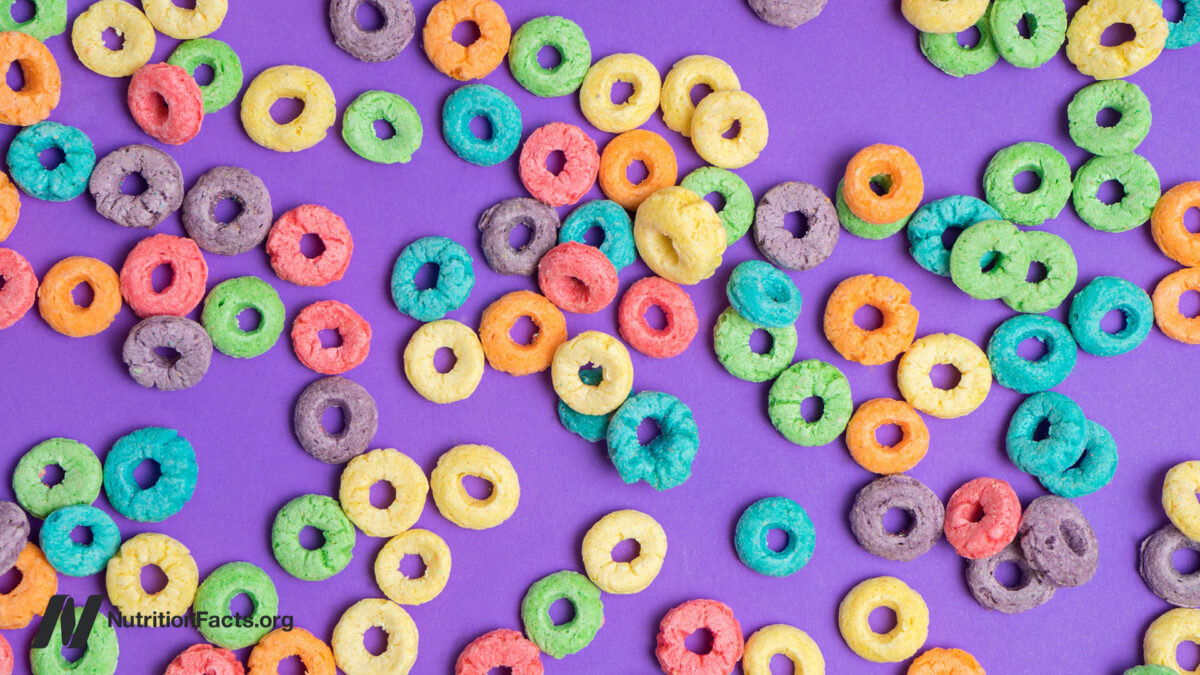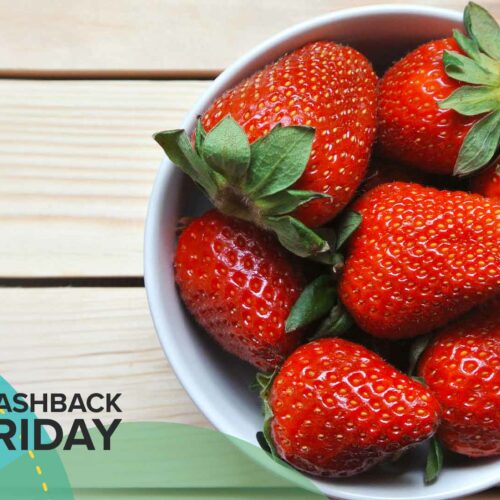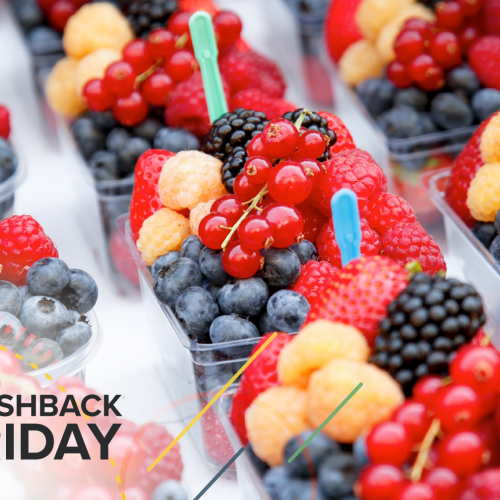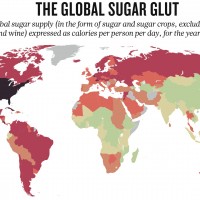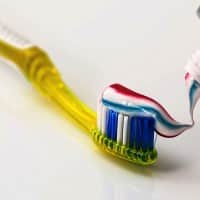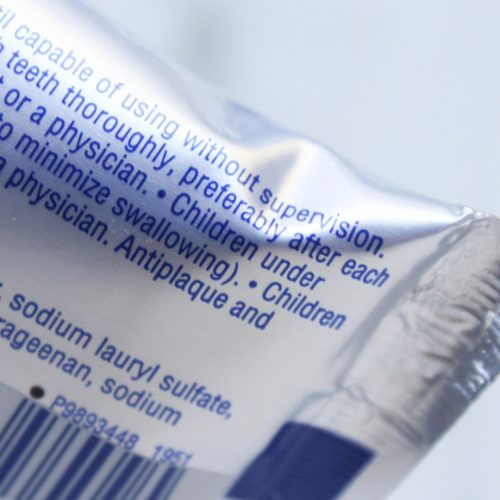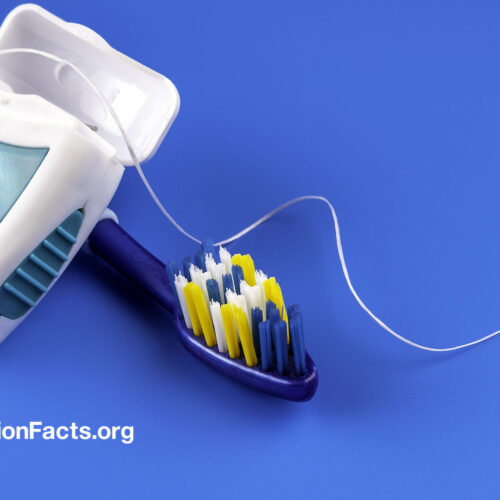Which foods have the greatest cavity-causing potential?
Nearly half a century ago at a Senate hearing on nutrition, a Dr. Nizel from Tufts suggested that sugary breakfast cereals “should be banned in the best interest for all concerned, particularly children,” perhaps not surprisingly, since he was a professor of dental medicine.
As I discuss in my video Flashback Friday: The Worst Food for Tooth Decay, a dozen different foods and beverages were tested in a study and ranked for their “cariogenic potential”—their cavity-causing potential—by implanting electrodes in the mouths of study participants to measure the amount of acid produced in the plaque between their teeth after eating a variety of different foods. The two breakfast cereals tested topped the charts, as you can see in the graph below and at 0:42 in my video.
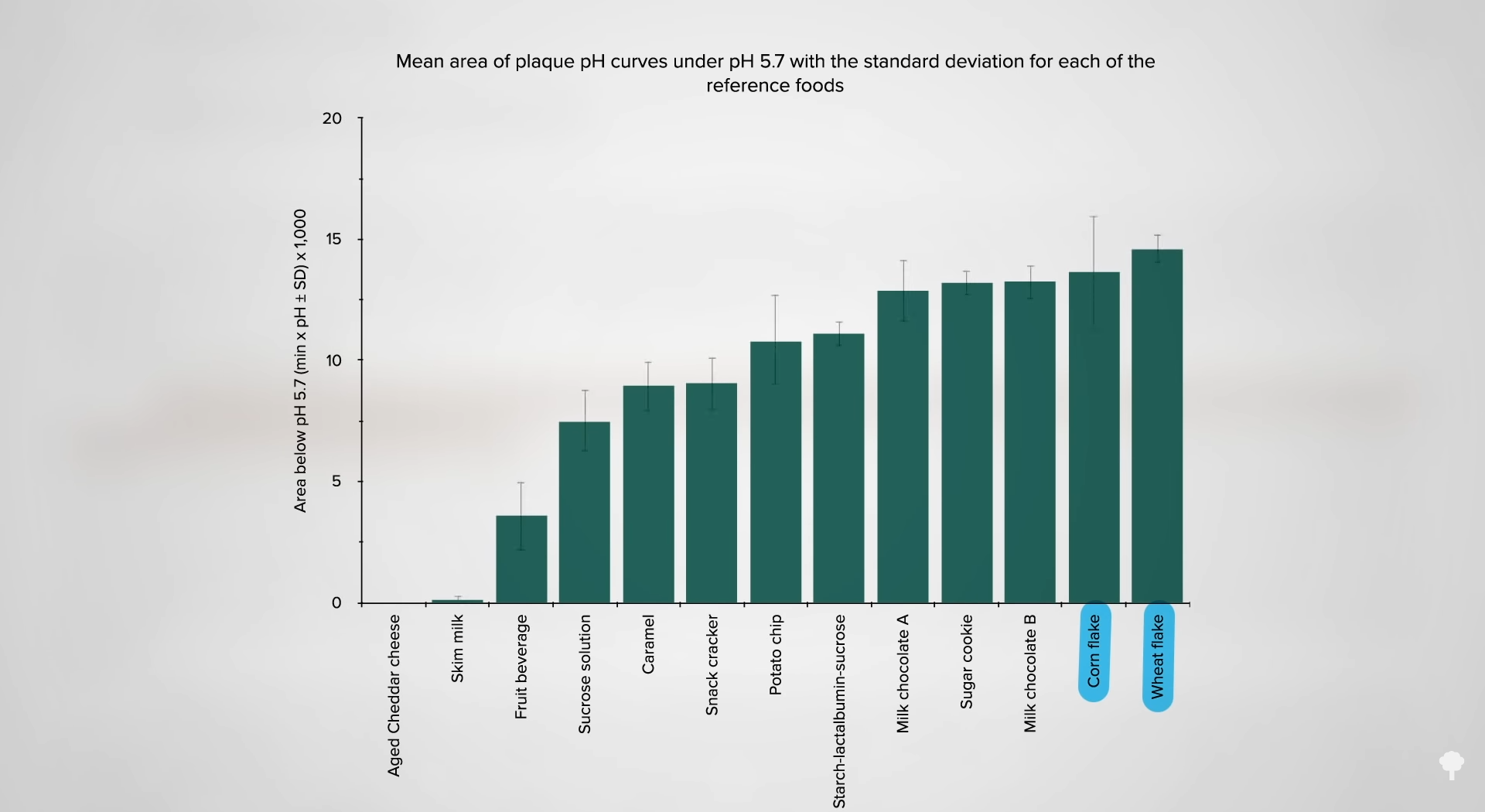
If you drink sugar water, the pH on your teeth plunges within minutes into the acidic danger zone and stays there for an hour, eating away at your teeth. Caramel is worse. It sticks to your teeth, so it stays longer, and your pH goes down even deeper into the acid zone. However, with the two breakfast cereals (corn flake and wheat flake), it went down and stayed down even two hours later.
We’ve known about the cavity-causing potential of presweetened breakfast cereals for decades. As you can see below and at 1:16 in my video, a dozen such cereals—Cookie Crisp, Cocoa Krispies, Froot Loops, Sugar Corn Pops, Sugar Frosted Flakes, Cap’n Crunch, Cocoa Puffs, Powdered Donutz, Frosted Mini-Wheats, Grape-Nuts, Rice Krispies, and Cheerios—were put to the test to measure the level of tooth-dissolving acid produced by the strain of bacteria that causes cavities. As one might expect, the cavity-generating potential was “found to be related directly to the sugar content of each cereal,” though Frosted Mini-Wheats was an exception. Despite having 40 percent less sugar than cereals like Froot Loops or Frosted Flakes, Frosted Mini-Wheats caused the greatest calcium demineralization, ranking second only to the now defunct “Powdered Donutz” in cavity-causing potential. A study of 28 different cereals concluded, “Unquestionably, the sugar concentrations in these twenty-eight cereals are sufficiently high to qualify them as dentally dangerous from that aspect.”

Wanting to be good corporate citizens, General Mills took its Super Sugar Crisp, which was 44 percent sugar, and reduced the sugar—well, it reduced the font size of the word “sugar” on the product box. Then, since it cares about children’s health so much, it removed sugar altogether—from the product name. Super Sugar Crisp was renamed Super Golden Crisp.
Kellogg’s cares, too. Though Sugar Smacks is where space energy comes from, at least according to a classic box of the product featuring an image of Spock from Star Trek, it doesn’t sound as wholesome as Honey Smacks, which it was later renamed. Same cereal, healthier-sounding name. Kellogg’s did remove sugar from Corn Pops and Frosted Flakes—from the front of the boxes.
And Cookie Crisp? I think the fact that it’s made by a dog food company, says it all.
But General Mills protests. A study it did in which teens were randomized to either receive free cereal delivered to their homes or not found that those who got the cereal didn’t seem to get any more cavities, supposedly proving that breakfast cereal is harmless for your teeth. Care to take a guess at the study’s fatal flaw? The kids in the control group were free to just have their parents buy them sugary cereals from the store, so both the experimental group and the control group may have been eating the same cereal “with the only difference being that the experimental group received its cereal free and the control group children paid for their cereal.”
What did the General Mills researchers have to say for themselves? “Dietary controls so rigid as to exclude the ingestion of cereals by children would be difficult, if not impossible, in a long-term study.” Then that’s not a control group!
This is similar to a certain Kellogg’s-funded paper that maintained if we didn’t feed kids sugar, we could virtually eliminate cavities, but “this ideal is impractical.” So, Kellogg’s took the middle-ground and come up with Froot Loops with marshmallows. At least they’re fruit-shaped or at least “fruity shaped”!
Observational studies have also failed to link breakfast cereal consumption with cavity prevalence or incidence, though. This is presumed to be because eating cereal with milk helps clear food particles from the mouth. Though Frosted Mini-Wheats did lead to the same sugar retention in the saliva ten minutes after intake with or without milk, the other cereals were cleared out faster. However, “sugared cereals are often eaten as snacks by kids without milk, which makes the sugar more likely to stick to the teeth…”
Ten minutes after the ingestion of dry sugary cereals, you’re left with nearly 50 times the sugar residue in your mouth, compared to swishing down the sugar in liquid form. The researchers concluded that “it is inconceivable to contest the fact that frequent between-meal ingestion of high-sugar, physically retentive products, cereal or otherwise, is dentally hazardous. Whether or not meal-time eating of sugared cereals induce caries [cavities] is not the point…because considerable amounts of them are eaten between meals, they have a marked potential for dental danger.”
Flashback Friday: Which Is a Better Breakfast—Cereal or Oatmeal? Stay tuned for the video coming out in a few weeks and, in the meantime, check out how to make A Better Breakfast.
Studies like the one from General Mills are the reason it’s so important to look beyond the headlines and why I dedicate so much time to pointing out research flaws and red flags. The lesson is to always check the primary source—or just let me do it for you!
Citrus can also have an acidifying effect on teeth, so always rinse after consuming it. See Plant-Based Diets: Dental Health to learn more.
When it comes to caring for your teeth, Don’t Use Antiseptic Mouthwash. Watch Flashback Friday: What’s the Best Mouthwash? for a better option. Find out How to Stop Tooth Decay.
